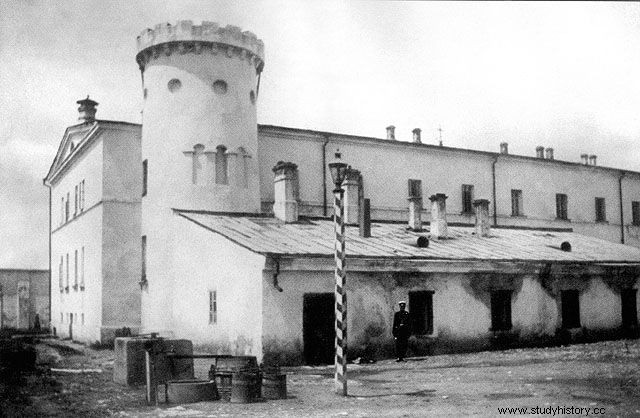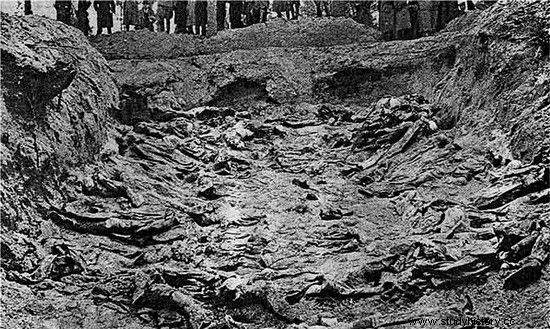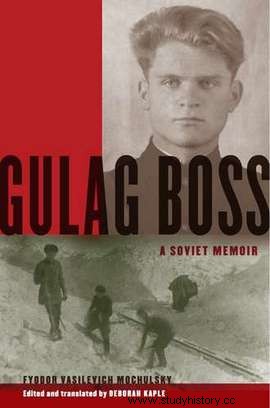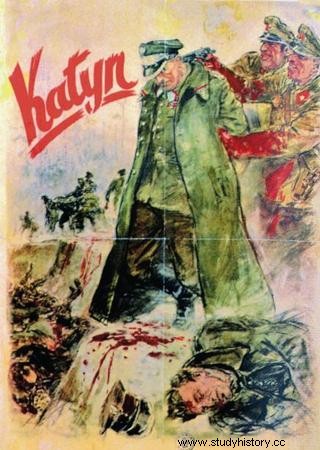We know the mass crimes of the war period mainly thanks to the accounts of victims who miraculously managed to survive. Their executioners were not so eager to confide. In bookstores we will not find memories of people who shot Polish officers in Katyn or Miednoje in the back of the head. What did they think? Were they not hesitant? How did they get this "job"? An inconspicuous booklet published by Oxford contains an account that allows you to answer at least some of these questions.
I am talking about the publication "Gulag Boss" by Fiodor Wasiljewicz Moczulski. These are the memories of the Gulag sub-camp manager, who during the war supervised the work of the convicts in the far north. The book itself is quite interesting (though extremely biased), but the most interesting are the memories cited by the author as if in the margins. Moczulski tells about a man whom he met in one of the sub-camps and for a short time worked as his deputy.
This new head of the labor camp was an emaciated man, about thirty years of age, with both a mental hospital and death row stays behind him. The author writes about him only because his company turned out to be a constant nuisance .

The infamous Butyrki prison. For killing a prisoner there, the hero of memories was promoted to executor.
Every day the man sat with a bottle of vodka in his deputy's dugout and told how he was sent to prison and then - after acquittal - to work in the Gulag. Let us add that he previously had a very unusual job. Moczulski recalled that conversations with him simply drove him mad: There was no place to run away, however. All around was dark night and tundra (p. 46) .
Let's start from the beginning:
When asked how he found himself in such a very atypical job, he replied that when he was demobilized after serving in the army, he received a job as a warden in Butyrki prison in Moscow. One day a prison car with a new batch of detainees drove into the courtyard. It so happened that the gate of the inner courtyard would not open, so (...) the prisoners were released into the outer courtyard. One of the inmates noticed that the [second] gate leading outside the prison was still open and he started to flee. While on guard duty, the chief of my sub-camp was standing right next to this gate. As soon as he saw what was happening, he yanked the saber hanging at his side from its scabbard and stuck it straight into the spine of the prisoner trying to get out.
The Butyrki guards who thoughtlessly left the courtyard gate open were punished. It was a prison officer (my future boss) who managed to prevent the prisoner from escaping. As a reward for his decisive action, he was offered a new job. In this new position, he was to carry out "special orders", that is, to work as an enforcer who shot enemies of the Soviet power (pp. 46-47) .

Photo from the exhumation of the bodies of Polish officers murdered in Katyn. The execution was carried out using the same method by the executioner, whose memories are quoted by Moczulski.
Of course, the guard agreed to an unexpected promotion and after a short training, he went to Uglich (a city in central Russia, on the Volga), where he was to take up his duties.
He related that he often sat completely idle for many days in a row between consecutive orders. He was resting. Later, when a sufficiently large group of convicts had gathered in the prison, the authorities set a date for the execution . At that time, a group of particularly trusted employees of the security department of the prison in Uglicz was sent to a carefully selected place in the forest to dig a hole. This pit was guarded until the execution. Starting at night and working until morning, prison officials transported the inmates in locked trucks to the vicinity of the pit. He said that in addition to the security officers and the person who supervised the execution, the doctor was always on hand. His task was to confirm the death and prepare the necessary documents.
This article has more than one page. Please select another one below to continue reading.Attention! You are not on the first page of the article. If you want to read from the beginning click here.

One by one, prisoners were led out of the truck to the edge of the pit . There, the condemned man was forced to kneel facing the hole in the ground. The enforcer then shot him in the back of the head and the dead fell inside. The enforcer told me that the body would turn upwards from the blow to the head and lay it supine on the bottom of the pit. Eventually the doctor came down the hole and confirmed that the prisoner was dead. Then another convict was brought from the truck.
He told me that would occasionally come across a prisoner who didn't listen to what was said and refused to obediently come to the edge of the pit. In such cases, security guys had to come to the rescue and the work of the enforcer became more confusing.
Once the mission had been completed and the pit was full of bodies, it was covered with dirt and made to look as inconspicuous as possible. He told me that after each such mission he got drunk and tried not to think about what he had done until he was called again. However, for a long time he believed that his work was important and honorable because it deals with the annihilation of the enemies of Soviet power (pp. 47-48) .
Although the author does not provide exact dates, the context shows that all this must have taken place shortly after the September campaign and the war with Finland - it was after one of these two armed conflicts that the hero of the memoirs was demobilized.

NKVD officers. For them, human life had virtually no value.
So he was doing his new "job" in the same period when Polish officers were murdered in the same region. Let us recall that the crimes of, inter alia, in Katyn, Miednoje and Kharkiv took place in the spring of 1940. Miednoje is located only about two hundred kilometers from Uglicz. Of course, it is impossible to say that the enforcer mentioned by Moczulski also killed Polish officers. It is probable inasmuch as the Poles were shot in various unknown or uncertain places. In any case, just such people, with a similar "career" and experience behind them, became Katyn executioners .

We do not know for sure whether the hero of Moczulski's memoirs shot Polish officers in 1940, but it is quite likely.
And how did the story of this particular enforcer end?
Finally one day he was ordered to shoot a fourteen-year-old girl. The enforcer was told - just before he was about to do his job - that not only was she the daughter of an "enemy of the people" but also a "German spy." Suddenly and involuntarily, his head filled with questions. He was going to kill a fourteen-year-old girl in an Old Russian town far from the front, where no secret infrastructure was located? Where could this teenager spy and to whose benefit?
When they brought her to the execution site, she stood steadily and quietly. However, when she was led to the dug hole, she spoke. She said she didn't understand why they were taking her life. "After all, even Stalin said that children are not responsible for their parents, so why me?" - she asked. The enforcer added that she was not even aware that she was also accused of being a "German spy".
Quoting the words of my old boss, he got drunk after the execution. So much as not to feel anything anymore. He was sent to an insane asylum soon afterwards (p. 48) .
Bibliography:
- Fyodor Vasilevich Mochulsky, Gulag Boss , ed. and transl. to English Eng. Deborah Kaple, Oxford University Press 2011 ( Polish translation for the purposes of this article by Kamil Janicki )
